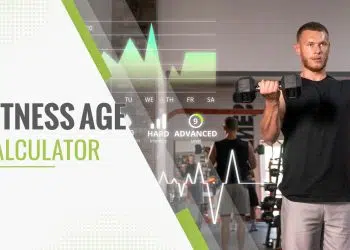RMR Calculator: if you want to lose weight or develop more muscle mass, the first step to calculate your nutritional needs is getting your Resting Metabolic Rate or RMR. This number represents how much energy your body burns every day when you’re not actually working out or moving around.
Every time you breathe, and for every heartbeat, your body burns energy to keep you alive. Thus, if you want to know your total daily energy expenditure, you need to know your resting metabolic rate and the calories you’re burning through physical activity.
Result:
Differences between Resting Metabolic Rate (RMR) and Basal Metabolic Rate (BMR)?
The term Resting Metabolic Rate, or RMR, is used interchangeably with Basal Metabolic Rate or BMR. However, they are not exactly the same thing. Resting Metabolic Rate calculates how many calories you burn at rest when you’re not working out. Basal Metabolic Rate calculates how many calories your body burns to keep you alive. So, BMR is more useful for bedridden patients who are not actually moving a muscle the entire time. That’s why RMR is superior and more commonly used if you want to know how many calories you burned after an average day.
How does a Resting Metabolic Rate calculator work?
It is possible to calculate your Resting Metabolic Rate by using a formula called Harris-Benedict Equation. This formula takes into consideration your weight in kilograms, your height in centimeters, and your age in years. It is a slightly different equation for men and women, but the principles are the same, and the resulting number is your basal metabolic rate. Then, you need to adjust this number with your basal activity level.
Level Up Your Fitness: Join our 💪 strong community in Fitness Volt Newsletter. Get daily inspiration, expert-backed workouts, nutrition tips, the latest in strength sports, and the support you need to reach your goals. Subscribe for free!
That is why in a Resting Metabolic Rate calculator, you need to input basic data, including your gender, age, height, weight, and levels of activity. Your activity levels can be sedentary, lightly active, moderately active, or very active. Each one depends on how much physical effort your work requires and how much exercise you do every week.
Harris-Benedict Equation for BMR:
- Men: BMR = 88.362 + (13.397 x weight in kg) + (4.799 x height in cm) – (5.677 x age in years)
- Women: BMR = 447.593 + (9.247 x weight in kg) + (3.098 x height in cm) – (4.330 x age in years)
How accurate is my RMR?
After using a Resting Metabolic Rate calculator and starting your diet according to this number, it is possible you will need to adjust your calorie intake once or twice before starting to see results. That’s because RMR calculators give you an approximate number that may change due to several factors. For example, if you increase your muscle mass, your RMR will increase, too. And you might be one of those who are constantly moving and fidgeting excessively, which may also increase your Resting Metabolic Rate.
- Men: Average BMR just over 1,600 calories per day
- Women: Average BMR 1,400 calories per day
Thus, after calculating your RMR, use this number as a baseline calculation and be sure to track your weight and measures. Adjust your energy intake according to your RMR and the results you get, and keep constant in your physical activity and a healthy dietary pattern. In time you will find the most appropriate calorie intake for you and according to your goals.
Frequently Asked Questions
What RMR formula?
Resting Metabolic Rate (RMR) equations:
- Men: BMR = 88.362 + (13.397 x weight in kg) + (4.799 x height in cm) – (5.677 x age in years)
- Women: BMR = 447.593 + (9.247 x weight in kg) + (3.098 x height in cm) – (4.330 x age in years)
What is RMR stands for?
Resting Metabolic Rate is number represents how much energy your body burns every day when you’re not actually working out or moving around.
Reference
Blunt K, Dye M. Basal metabolism of normal women. J Biol Chem. 1921.








